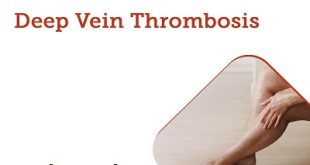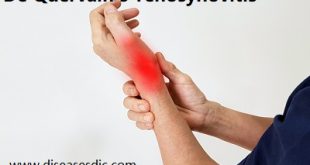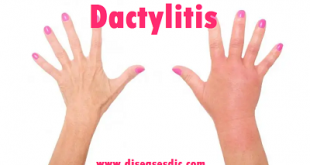Overview of Dubin Johnson Syndrome
Dubin Johnson Syndrome (DJS) stands as a rare and benign chronic condition affecting bilirubin metabolism. It is distinguished by conjugated hyperbilirubinemia, a liver exhibiting dark pigmentation, and the occurrence of anomalous pigment in hepatic parenchymal cells. The initial documentation of DJS dates back to 1954 when Dubin et al and Sprinz et al first described multiple instances of chronically jaundiced yet otherwise healthy young adults. These individuals displayed a persistent low-grade jaundice, primarily characterized by conjugated hyperbilirubinemia, along with distinctive blackened livers. Notably, these cases exhibited no additional indications of hepatobiliary disease.
Being an autosomal recessive disorder, Dubin Johnson syndrome (DJS) has been elucidated through genomic investigations, revealing that the condition arises from homozygous or compound heterozygous mutations in ABCC2/MRP2. These mutations lead to the absence or deficiency in the expression of the transporter MRP2. DJS patients exhibit various mutations, encompassing exon skipping, missense, nonsense, and base deletion. A majority of these mutations culminate in stop codons, impeding the transcription of MRP2.
Notably, DJS does not involve hemolysis, and there is no elevation observed in other liver enzymes. The primary pathology lies in the impaired secretion of conjugated bilirubin and other non-bile salt organic anions from hepatocytes into the bile. Despite these genetic and biochemical abnormalities, DJS typically follows a generally benign course.
Etiology of Dubin Johnson Syndrome
Dubin Johnson syndrome (DJS) arises from mutations in the ATP binding cassette subfamily C member (ABCC2) gene. This gene is responsible for encoding multidrug resistance protein 2 (MRP2), a crucial transporter protein. MRP2 plays a vital role in expelling substances from cells, particularly facilitating the secretion of conjugated bilirubin from hepatocytes into the bile duct system for excretion.
When the ABCC2 gene undergoes mutation, it leads to a deficiency in canalicular MRP2 expression, disrupting the transport of conjugated bilirubin into the bile duct system. Consequently, conjugated bilirubin accumulates in hepatocytes, causing an elevation in its levels in the bloodstream.
A distinctive characteristic of DJS is the alteration in the ratio of byproducts generated during heme synthesis. In individuals with this syndrome, urinary coproporphyrin I levels surpass coproporphyrin III levels. In a normal, healthy population, the ratio of coproporphyrin III to coproporphyrin I is typically around 3.5:1.
Prevalence
The exact prevalence of Dubin Johnson syndrome remains uncertain. It is notably prominent among Iranian and Moroccan Jews residing in Israel, affecting approximately 1 in 1,300 individuals. Moreover, some cases of Dubin Johnson syndrome have been identified within the Japanese population. In contrast, the incidence of this condition seems to be lower in other ethnic groups.
Symptoms of Dubin Johnson Syndrome
Dubin Johnson Syndrome is associated with the dysfunction of liver cells, specifically hepatocytes, leading to symptoms related to the abnormal secretion of conjugated bilirubin into the serum. Normally, hepatocytes release bilirubin into the bile; however, in this condition, it is secreted into the serum. Key symptoms observed in this case include:
- Conjugated bilirubinemia
- Jaundice
- Abnormal color of urine
- Abnormality of the tracts of bile duct
- Abnormal gastric mucosa
- Fever
- Fatigue
Causes of Dubin Johnson Syndrome
DJS is a very rare genetic disorder. In order to inherit the condition, a child must get a copy of the defective gene from both parents.
The syndrome interferes with the body’s ability to move bilirubin through the liver into the bile. When the liver and spleen break down worn out red blood cells, bilirubin is produced. Bilirubin normally moves into the bile, which is produced by the liver. It then flows into the bile ducts, is stored in the gallbladder, and then flows into the digestive system.
When bilirubin is not properly transported into the bile, it builds up in the bloodstream. This causes the skin and the whites of the eyes to turn yellow. This is called jaundice. Severely high levels of bilirubin can damage the brain and other organs.
People with DJS have lifelong mild jaundice that may be made worse by:
- Alcohol
- Birth control pills
- Environmental factors that affect the liver
- Infection
- Pregnancy
- Fasting or dehydration
- Fatigue
Complications
individuals with DJS typically lead normal, healthy lives without significant complications. However, there are certain considerations and aspects related to the syndrome:
- Chronic Jaundice: The persistent elevation of conjugated bilirubin levels can lead to chronic jaundice, which may cause cosmetic concerns for some individuals. While jaundice itself is not harmful, it can affect the appearance of the skin and eyes.
- Psychosocial Impact: Living with a chronic condition, even one with minimal health consequences, can have psychosocial implications. Individuals with DJS may face challenges related to self-esteem, body image, and social interactions due to the visible symptom of jaundice.
- Reproductive Considerations: Since Dubin Johnson Syndrome is an autosomal recessive disorder, there may be implications for family planning. Individuals with DJS may want to consider genetic counseling to understand the risk of passing the condition to their offspring.
- Routine Monitoring: While DJS itself is not associated with severe complications, individuals may require routine monitoring to assess liver function and rule out any potential changes over time. This may involve periodic blood tests and imaging studies to ensure overall liver health.
- Overlap with Other Liver Conditions: In some cases, individuals may have co-existing liver conditions or may be at risk for other liver disorders. It’s essential for healthcare providers to monitor liver health and address any emerging issues promptly.
It’s crucial to note that Dubin Johnson Syndrome, by itself, does not typically lead to life-threatening complications or significant impairment of liver function. However, ongoing medical supervision and a holistic approach to healthcare are important to address individual needs and ensure overall well-being.
Risk factors of Dubin Johnson Syndrome
the most significant risk factor is having a family history of the condition. The key risk factors associated with DJS include:
- Genetic Inheritance: DJS follows an autosomal recessive pattern of inheritance. This means that an individual must inherit two copies of the mutated gene (one from each parent) to manifest the syndrome. If both parents are carriers of a mutated ABCC2 gene, there is a 25% chance with each pregnancy that the child will have DJS.
- Parental Carriers: Parents who are carriers of a single copy of the mutated ABCC2 gene are typically asymptomatic carriers of DJS. Carriers do not exhibit symptoms of the syndrome, but they can pass the mutated gene to their offspring.
- Ethnic Background: While DJS can occur in individuals of various ethnic backgrounds, certain populations have shown a higher prevalence. For example, DJS appears to be more common in Iranian and Moroccan Jews living in Israel.
- Consanguinity: In populations or families where consanguineous marriages (marriages between close relatives) are more common, there may be an increased risk of the mutated gene being passed down through generations.
It’s important to note that the presence of risk factors doesn’t guarantee that an individual will develop Dubin Johnson Syndrome.
Diagnosis and Tests
Your provider will diagnose Dubin Johnson syndrome after providing a physical exam to look at your symptoms and learn more about your medical and family history.
Your provider will order tests to verify your diagnosis including:
- Imaging tests (X-ray, ultrasound) of your liver.
- Blood tests (bilirubin test).
- Urine tests.
- Possibly a liver biopsy.
A high bilirubin test result will lead to a diagnosis of hyperbilirubinemia (too much bilirubin in your blood). If your symptoms persist, your provider will order a genetic blood test to identify the gene that causes your symptoms. The genetic test confirms a diagnosis of Dubin Johnson syndrome.
Treatment for Dubin Johnson Syndrome
Dubin Johnson Syndrome (DJS) is a genetic disorder, and there is no specific cure for it. Treatment for Dubin Johnson Syndrome is primarily focused on managing symptoms and supporting overall health. Here are some general approaches to treatment:
Symptomatic Management
Since DJS is a genetic condition, the main goal is to manage symptoms rather than cure the underlying genetic mutation. Treatment may involve addressing specific symptoms, such as jaundice, through measures like dietary adjustments.
Bilirubin Management
Bilirubin levels may be monitored regularly through blood tests. Managing bilirubin elevation involves lifestyle measures and, in some cases, avoiding substances that can stress the liver.
Liver Function Monitoring
Routine liver function tests and imaging studies may be conducted to assess the health of the liver and detect any potential issues.
Avoidance of Triggers
Individuals with DJS may be advised to avoid certain medications or substances that could impact liver function. This includes drugs metabolized by the liver and those that may interfere with bilirubin metabolism.
Healthy Lifestyle
Adopting a healthy lifestyle, including a well-balanced diet, regular exercise, and adequate hydration, is essential for overall well-being.
Genetic Counseling
Genetic counseling can provide information about the genetic aspects of DJS, including the risk of passing the condition to offspring. It can assist individuals and families in making informed decisions about family planning.
Regular Medical Follow-ups
Regular check-ups with healthcare professionals, such as hepatologists or genetic specialists, are important for ongoing monitoring and addressing any emerging health concerns.
It’s crucial for individuals with Dubin Johnson Syndrome to work closely with their healthcare team to develop a personalized management plan. While there is no specific medication or procedure to treat DJS directly, the focus is on maintaining liver health, managing symptoms, and promoting an overall healthy lifestyle.
Prevention of Dubin Johnson Syndrome
Preventing Dubin Johnson Syndrome (DJS) is not possible because it’s a genetic condition. However, for those with a family history:
- Genetic Counselling: Seek advice from genetic counsellors for information on the risk of passing DJS to future generations.
- Family Planning: If you carry the mutated gene, consider genetic testing before starting a family to make informed decisions.
- Prenatal Testing: For higher-risk situations, prenatal testing can help determine if the baby has inherited the mutated gene.
Remember, these steps provide information but do not stop the occurrence of DJS. Consult healthcare professionals for personalized guidance.
 Diseases Treatments Dictionary This is complete solution to read all diseases treatments Which covers Prevention, Causes, Symptoms, Medical Terms, Drugs, Prescription, Natural Remedies with cures and Treatments. Most of the common diseases were listed in names, split with categories.
Diseases Treatments Dictionary This is complete solution to read all diseases treatments Which covers Prevention, Causes, Symptoms, Medical Terms, Drugs, Prescription, Natural Remedies with cures and Treatments. Most of the common diseases were listed in names, split with categories.







